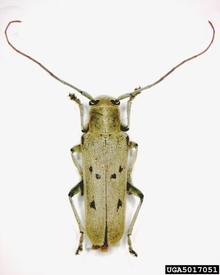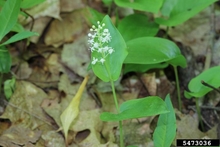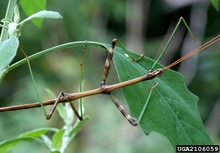Have you seen the blog Recommended trees and plants for the Central Lakes area of Minnesota? The spotlighted species below are from that area. I hope you enjoy getting to know these species a little better — I certainly did!
Basswood (Tilia americana)
Often called American basswood, this tree is the only member of the genus Tilia in the Western Hemisphere. It's also a member of the Malvaceae family, which has several high value plants including cotton, okra and cacao, the primary ingredient in chocolate.
Basswood is a fast growing native broadleaved tree and a unique timber species. Its wood is very light, easy to carve and odorless, making it good for wooden serving ware production. The stringy inner bark is hard on industrial debarking equipment but has historically been used in basket making, fishing nets, rope and mats.
Basswood’s soft wood is used by many wood boring insects including the aptly named linden borer. Linden is the name native Tilia americana and non-native Tilia cordata get when they’re bred for horticultural production and planted in our communities. There are many linden cultivars sold in trade.
Valuable to pollinators, basswood blooms in June and is cross pollinated by bumblebees, sweat bees, blow flies, moths (including the creatively named zigzag herpetogramma moth), as well as other insects. This tree is modeled to be climate resistant in this Central Lakes area of Minnesota, but is not modeled to be as resilient in many other areas of the state.
Canada mayflower (Maianthemum canadense)
Canada mayflower is a very small perennial wildflower between 3”-8” tall that resembles non-native lily-of-the-valley. It is commonly found as a single, infertile leaf emerging from the ground, and flowering stems have 2-3 leaves with an emerging stock of small white flowers that are used for pollen by bees, flies and beetles. Small green berries, produced in July, are eaten and the seeds spread by ruffed grouse, white-footed mice and eastern chipmunk. Canada mayflower has traditional medicinal value and the root was used as a good luck charm before games.
Northern walkingstick (Diapheromera femorata)
True to their name, walkingsticks are long skinny insects that look like sticks on the move. This amazing camouflage is called crypsis, and coupled with the ability to lose a leg as an escape mechanism and later grow it back, offers protection from predators such as songbirds and rodents.
Minnesota has two species of walkingsticks: northern walkingstick, which is found in the forested regions of Minnesota, and prairie walkingstick found in the prairie region. Northern walkingsticks feed on basswood, white oak and American hazelnut, species included on the Central Lakes area list. Occasionally during population booms flightless walkingsticks can cause severe localized tree defoliation.
Like many insects, females are not picky about mating partners, so male walkingsticks commonly continue to embrace the female long after copulation is complete to prevent her from mating with another. They may sustain that position for over 5 days! Female walkingsticks climb trees, lay the eggs, and then camouflage themselves to look like small seeds. They then fall to the ground and overwinter in leaf litter — another good reason to transition grassy areas of your landscape to native understory!
Interestingly, walkingsticks can also produce offspring through parthenogenesis or “virgin birth” without copulations, however all offspring will be female. Young walkingsticks nymphs are similar in form and shape compared to adults walkingsticks, but they grow in size and mature in color from white to green to brown as they morph between nymphal stages. Historically, even years (like 2022) are “off years” for broods, so be on the lookout for walkingsticks this “on” year!
American basswood, Illinois wildflowers
Canada mayflower, Illinois Wildflowers
Maianthemum canadense, Wikipedia
Northern Walkingstick (Family Diapheromeridae), UW Milwaukee
Northern walkingstick, Forest Pest Insects in North America: a Photographic Guide, USFS et al
Recommended trees and plants for the Central Lakes area of Minnesota, UMN Extension
Tilia americana, Wikipedia




